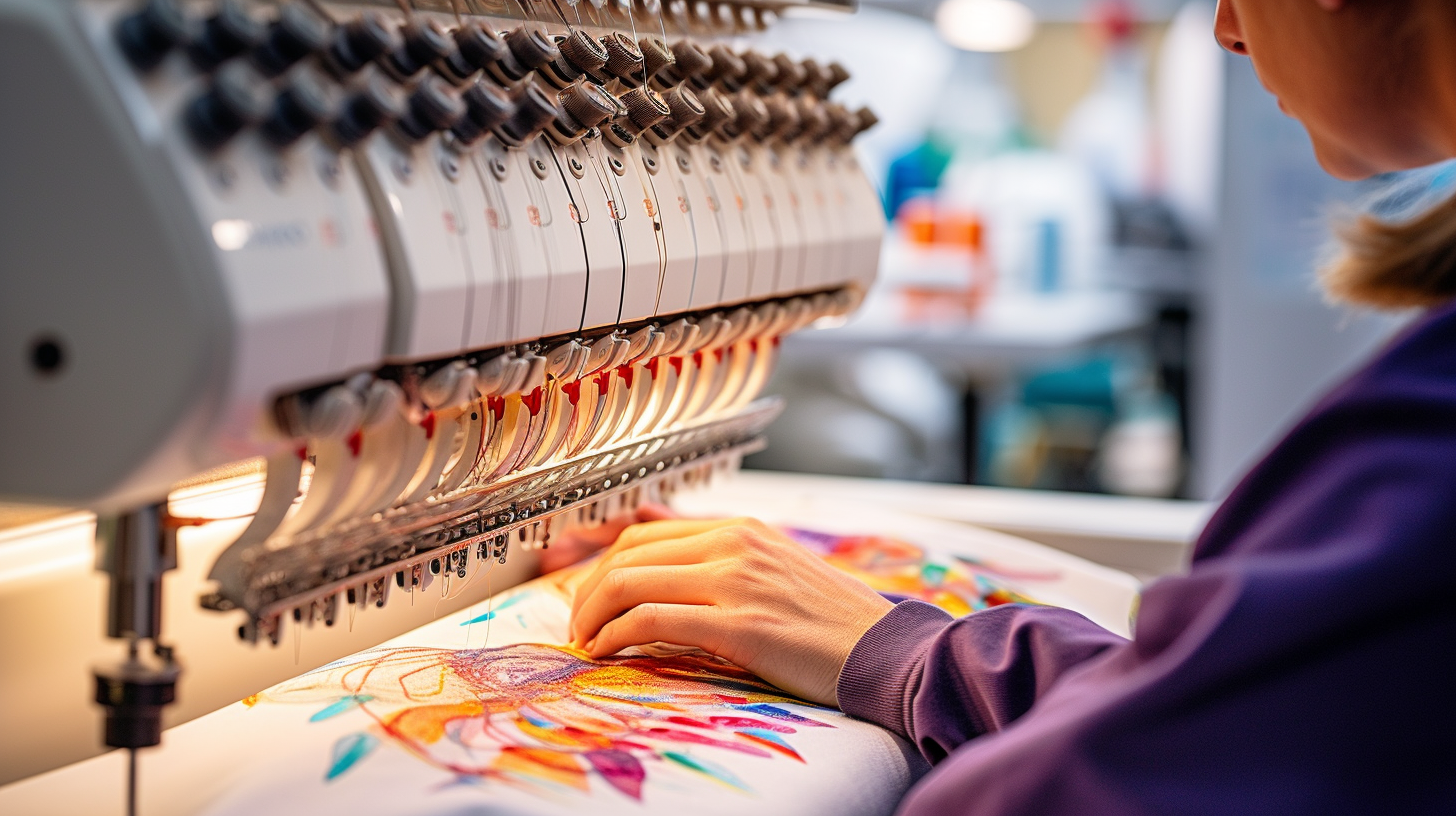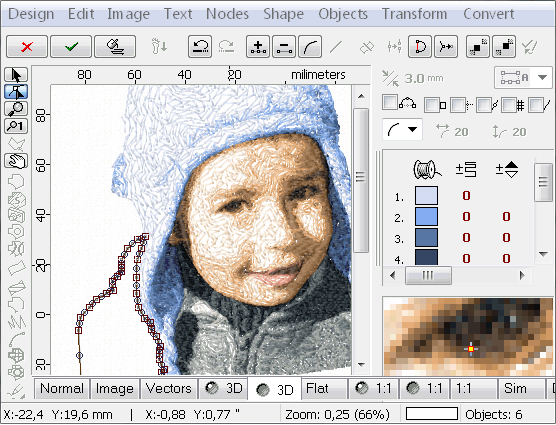Inexpensive Digitizing for Embroidery: Accuracy and Detail
Inexpensive Digitizing for Embroidery: Accuracy and Detail
Blog Article
Simplifying the Art of Embroidery Digitizing: Step-by-Step Guide
As technology continues to development, the digitization procedure has actually ended up being extra available, permitting enthusiasts to bring their intricate styles to life with convenience. In this guide, we will certainly unwind the complexities of embroidery digitizing, damaging down each step systematically to improve the procedure and encourage both newbies and skilled embroiderers alike.
Comprehending Embroidery Digitizing Software Application
Embroidery digitizing software program serves as a critical device for changing elaborate designs into electronic layouts compatible with needlework equipments, helping with accurate stitching and customization. This specialized software application enables users to import numerous photo file styles, such as JPG or PNG, and convert them into embroidery machine-readable layouts like DST, EXP, or PES - Digitizing for Embroidery. By making use of functions like stitch modifying, padding options, and thread color option, digitizing software program allows individuals to control every facet of the layout procedure
Moreover, progressed embroidery digitizing software program provides tools for producing intricate designs, readjusting stitch thickness, and integrating intricate details. Individuals can additionally sneak peek the design before stitching it out, making sure accuracy and lessening mistakes. In addition, lots of software programs supply automated features that aid improve the digitizing process, saving time and initiative.
Recognizing the capacities of embroidery digitizing software program is important for accomplishing high-grade results in needlework jobs. By understanding this device, needlework lovers and experts can release their creativity and bring intricate layouts to life with precision and effectiveness.

Choosing the Right Style File
After acquainting yourself with the capacities of needlework digitizing software program, the following vital action in the procedure is choosing the right layout declare your job. Digitizing for Embroidery. When choosing a design declare needlework digitizing, it's necessary to take into consideration the complexity of the style, the dimension of the end product, and the sort of material you will be collaborating with
For complex layouts with great details, a high-resolution picture or vector data is advised to guarantee that the needlework maker can accurately reproduce the style. Furthermore, the size of the last item plays a substantial duty in selecting the right layout documents. Larger layouts may require greater resolution files to keep clarity and sharpness.
Furthermore, the sort of material you will be embroidering on influences the choice of design documents. Various fabrics may call for adjustments in the style file to make sure that the stitches are properly aligned and the design looks like meant. By very carefully selecting anchor the best style data based on these aspects, you can set yourself up for an effective embroidery digitizing procedure.
Digitizing Devices and Methods
Utilizing specialized software program and precision methods, digitizing tools are vital in transforming complex styles into embroidery-ready files. Embroidery digitizing software application, such as Wilcom, Hatch, or Embrilliance, supplies the needed system to convert art work right into stitch information. These programs provide features like stitch editing and enhancing, padding alternatives, and text devices to guarantee the style translates flawlessly onto textile.
Among the essential strategies in digitizing is producing a clear path for the needlework maker to follow. This includes digitizing each element of the design with accuracy, figuring out stitch types, thickness, and directions. By utilizing devices like digitizing tablet computers or software-specific plugins, embroiderers can accomplish a high degree of precision in their digitized designs.
Furthermore, mastering the art of rug stitching is critical for producing high quality embroidery. Underlay sewing maintains the textile and produces a foundation for the layout, guaranteeing that the last item is both visually enticing and durable. By comprehending these digitizing devices and strategies, embroiderers can boost their craft and bring detailed designs to life with accuracy and performance.
Tailoring Stitch Kinds and Directions
The selection of stitch kinds can significantly impact the general appearance and structure of the stitched design. By strategically integrating these stitch types, embroiderers can achieve deepness and dimension in their layouts.
Moreover, the instructions of stitches plays an essential function in boosting the aesthetic appeal of the last embroidery. Diverse stitch instructions can add appearance, highlight details components, and create visual interest. For example, transforming the angle of stitches can imitate movement or all-natural patterns go to this site like hair or feathers. By exploring with different stitch angles and patterns, embroiderers can bring their styles to life with impressive information and details. Grasping the art of tailoring stitch types and instructions empowers embroiderers to release their imagination and raise the high quality of their job.
Testing and Refining Your Digitized Layout
To guarantee the accuracy and top quality of your digitized design, complete screening and refinement are vital steps in the needlework digitizing procedure. As soon as you have completed the digitization of your style, it is critical to evaluate it before waging the actual embroidery. Evaluating allows you to identify any type of potential issues such as thread breaks, sew thickness troubles, or layout distortions that may affect the outcome.

After testing, it is crucial to fine-tune your digitized style based on the comments from the test sew-out. This may entail Read More Here tweaking stitch settings, adjusting thickness, or making adjustments to the total layout to accomplish the preferred outcome. By iterating through testing and refinement, you can adjust your digitized style to excellence before moving on with the actual needlework process.
Final Thought
In verdict, grasping the art of embroidery digitizing needs a thorough understanding of the software application, picking the ideal design documents, utilizing digitizing tools and strategies, customizing stitch types and directions, and testing and improving the digitized style. By adhering to these actions, embroiderers can simplify the digitizing process and create high-quality stitched designs with precision and performance.
Report this page